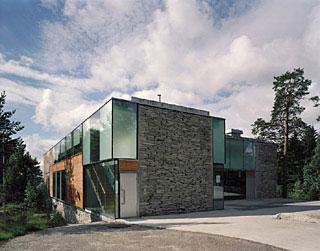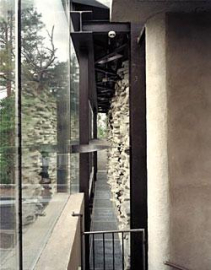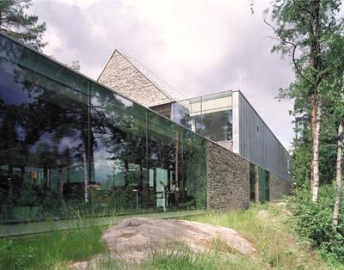Mortensrud Church
The church stands on top of a small crest with large pine trees and some exposed rock. Geometrically speaking, the church is an addition to the existing site: no blasting or excavation proved necessary, only careful removal of the thin layer of soil. One of the virtues of this technique is that it facilitates preservation of the existing vegetation and relief, thereby adding a further dimension to the experience of the building.
A number of trees are preserved in atriums within the enclosure. Some of the rock formations emerge like islands in the concrete floor of the church, between the congregation and choir. Thus the major interior divisions derive from elements already on the site. This is possible because there are relatively large tolerances in dimensioning the rooms. No module was used to determine the exact positions of the gardens, rather materials and structures were chosen to make gradual adjustment of dimensions possible without steps or modules.
The tension between the wish to create a silent self-referential room and a variety of obstacles limiting this possibility was deliberately chosen as an architectural strategy to disturb a process involving a wide range of people and interests, which would otherwise be heavily loaded with conventional and other historical references.
The main structure is a steel framework with a stone bearing wall supporting the roof. A glass façade standing 90-160 cm off the stone wall defines a narrow gallery around the church interior. This stone wall has been built without mortar, thereby allowing light to penetrate. The surface of one side is even while the other is rough. The uneven surface of the interior stone wall is exposed to the outside through the glass façade on three sides of the church.




